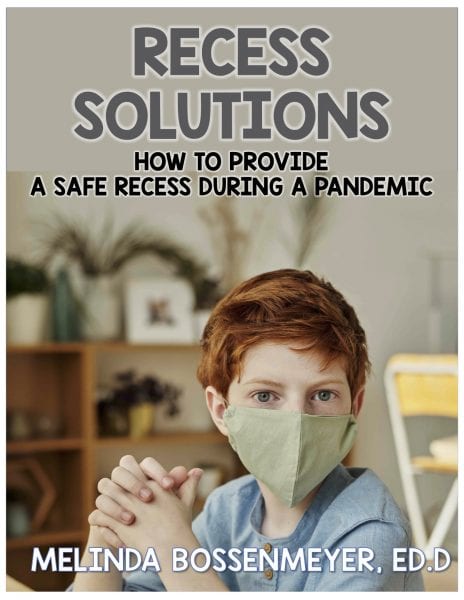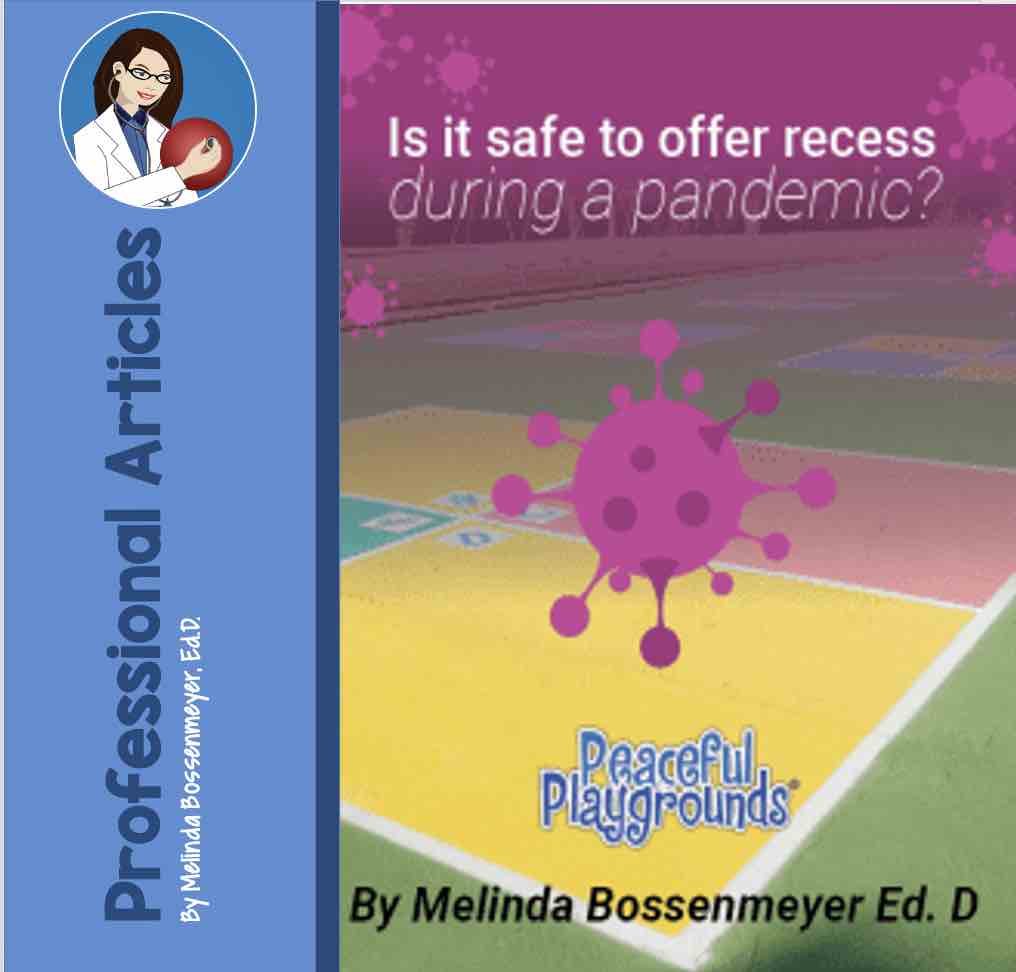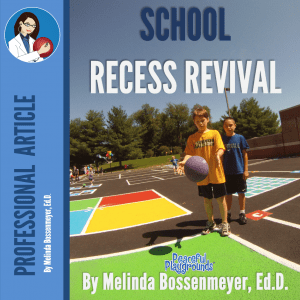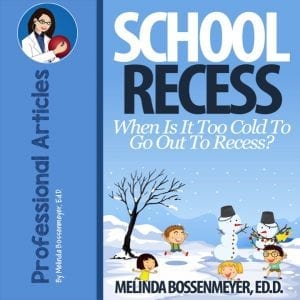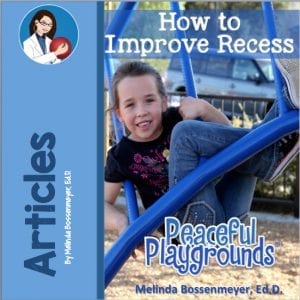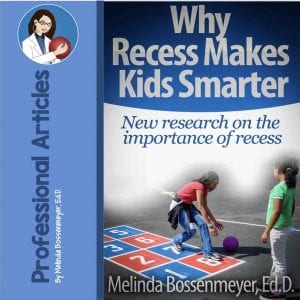GUIDELINES FOR A SAFE RECESS DURING A PANDEMIC
By Melinda Bossenmeyer, Ed.D. aka The Recess Doctor
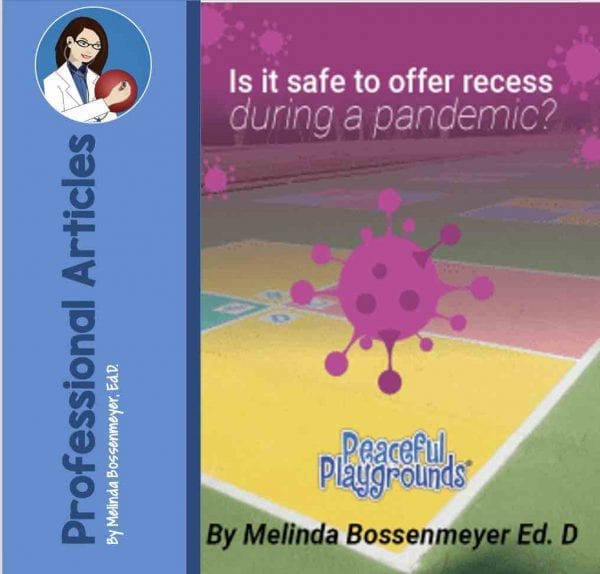
How to Have a Safe Recess During Covid
Schools across the nation are returning to classrooms, lunchrooms, and playgrounds to find that much has changed since the school closed in March. Each setting will require a set of procedures and protocols in order to keep recess safe.
One of the most challenging environments, the playground, children's favorite activity at school, can still be available albeit with a few changes, according to Dr. Melinda Bossenmeyer, nationally recognized playground designer, educator, and recess advocate. To understand how to make recess safe during the Coronavirus pandemic it is important to understand the targets or risks that must be mitigated to reduce exposure spread. These are not new ideas but are worth repeating.
High-risk factors for the spread of the virus are:
1. Number of Kids
2. Length of Exposure
3. Sharing Equipment
4. Not maintaining a safe distance
Recess Solutions webinar
Peaceful Playgrounds addresses each of these risk factors and offers potential ways to mitigate the spread of the virus in the outdoor recess environment. Peaceful Playgrounds, Inc. offers weekly "Recess Solutions Webinars: How to Offer a Safe Recess During the Pandemic" and provides information on how to support recess in schools.
Recess Guidelines for the playground to Reduce the Spread
Below is the set of "Recess Guidelines for the playground to Reduce the Spread", stated Dr. Bossenmeyer.
In order to offer a safe recess experience for students, 4 guidelines should be implemented.
1. Activity Zones
In order to reduce the number of children students come in contact with it is important to develop cohorts or groups of children who remain together during recess. These students go to an "Activity Zone" and stay in that assigned Activity Zone for the duration of the recess period. Students should not be able to change games or Activity Zones during recess. Students in each Activity Zone rotate to a new zone each day so that they can experience the variety of games and activities available over the course of a couple of weeks. Another way to reduce exposure to students is to stagger recess periods so that an entire grade level would not go to recess at the same time but recess would be planned and scheduled so the fewest number of classes would be on the playground for recess at one time.
2. Social Distancing
A second guideline to reduce the spread is to maintain the recommended 6 feet of social distancing. Outdoor markings much like game court markings, like 4 square or hopscotch, can help designate Activity Zones or areas. Markings can serve a number of purposes. In order to designate markings specific to COVID-19 social distancing, a school can paint dots or outline an Activity Zone for students to remain inside during recess. These markings can designate spots for actively playing, dots for waiting in line, and maintaining social distancing. A walking path for entering and exiting the playground can be as simple as painting a stripe or two down the middle of the playground which indicates the direction for students to walk to line up after recess. A freeze bell is also recommended so that each Activity Zone participant can be dismissed to maintain social distancing.
3. Supervision & Control
We have talked about a number of these strategies already. One is the freeze bell where students freeze at each Activity Zone and wait to be dismissed back to class. Walkways clearly indicated so that students do not walk across other games or zones to line up. Students are directed by the markings to a designated walkway for exiting and entering the playground. Another strategy for Supervision is the recommendation of reducing the number of students in each Activity Zone so that it makes it easier for an adult supervisor to observe all students in their Activity Zone to insure social distancing is maintained. Wearing a mask by both students and Supervisors is also recommended. A supervisor can remind students to use their masks outside at recess due to the risk of spreading droplets during periods of running or playing where droplets are thought to travel further.
4. No Shared Equipment
It is thought that the virus can be spread through touch, i.e. sharing equipment and classroom supplies. It is for that reason that equipment is not recommended at recess. Peaceful Playgrounds, Inc. has developed a set of outdoor activities that can be used with Google classrooms and digital learning and also for indoor brain break activities. These "No Equipment COVID-10 Activity Sets" do not require equipment, and thus reduce the likelihood of spread.
The purpose of this article is to demonstrate how recess can be offered safely if procedures and protocols are put into place that mitigates the spread of the virus. In this article, we reviewed the 4 high-risk factors for spreading the virus and we have offered 4 solutions for these risk factors. As a quick review: 1. Reduce the number of students at recess at one time through implementing Activity Zones and staggering recess periods. 2. It is through control and supervision that the length of exposure is reduced and the requirement for supervisors to see that children wear masks and maintain the 6-foot distance. 3. It is not necessary to share equipment if you implement games and activities that children enjoy but do not require equipment. 4. Finally, social distancing can be maintained through the use of playground markings painted on the ground or dots taped on a floor.
Peaceful Playgrounds, Inc. offers weekly "Recess Solutions Webinars: How to Offer a Safe Recess During the Pandemic" and provides information on how to support recess in schools.
